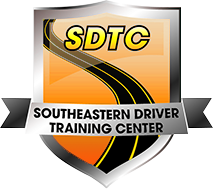It’s probably one of the most terrifying moments in a parent’s life watching their child drive out of the driveway on their own for the first time. That fear is certainly understandable when you consider that the number one cause of death for American teens is car crashes. While navigating the streets and highways of Wilmington, NC can certainly be challenging and down right dangerous at times there are certainly steps and actions that parents can take to help make their young driver safer on the road.
1. Set the example
Kids are like sponges and begin learning from their parents at very young ages. Simply put, if parents don’t want their child to text and drive then they shouldn’t text and drive.
2. Set the rules
Many new drivers fail to realize that driving is a privilege and not a right. Young drivers need to know what the rules and expectations are when they are driving. For example, “if you receive a speeding ticket or are caught using your cell phone while driving then you lose your license for one month” a parent might say. One item that can help set these ground rules is a Family Driving Agreement or Teen Driver Contract. Many driving agreements can be found online and can be customized to suit the family.
3. Use technology to your benefit
While technology can often lead to distracted driving it can also work to benefit parents and help them monitor their young driver’s driving habits. There are many apps for families that provide information such as phone usage while driving, speeds and locations for their young drivers that are easily found. One of our favorites is Life360. With the premium edition of this app it can provide information about aggressive driving habits, hard accelerations, hard braking incidents, phone use and speeding.
4. Communication
When parents ride with their young driver they should view their role as a coach and provide constructive instruction while trying not to become frustrated. Nothing kills a teenager’s desire to drive more than a parent that becomes frustrated or angry when riding in the passenger seat.
Communication also means that parents need to talk to their young driver about the dangers of alcohol/drug use and driving.
5. Increase their experience gradually
What makes new drivers much more likely to crash is simply inexperience. When a new driver receives their learners permit parents should start with “easier” drives. Rush hour conditions certainly aren’t ideal for breaking in new drivers. Let new drivers work their way up and gradually increase the difficulty. When your young driver is comfortable behind the wheel let them drive as much as possible. The only way for them to get experience is to drive.
6. The first year is the most dangerous
This might seem to contradict the preceding tip but parents should consider putting limitations on their child’s driving time when they first receive their license. For example, a parent might make a rule of no unnecessary driving during heavy traffic hours. Studies have shown that 16-year-olds are much more likely to become involved in a crash resulting in death or injury than any other age group. The more miles a 16-year-old drives the more of an opportunity he or she has to become involved in a crash.
7. Sit down with your insurance agent
A new driver can be a huge financial risk to a family. Parents should contact their insurance agent to make sure they have enough coverage in the event a serious collision or tragedy occurs. Medical bills and legal fees can add up quickly so it’s important to be prepared. It’s also a great idea to schedule an appointment with your agent and have your agent explain to your young driver what happens financially if they make poor decisions behind the wheel resulting in a crash or traffic citation.
8. Have a family car
Studies show that when new drivers share a car with other members of their family it helps them to be a little more cautious and responsible when behind the wheel. It can also help save on those insurance premiums.
9. Limit passengers
The research is pretty clear on this topic, the more teen passengers a younger driver has in their car the more likely they are to become involved in a fatal crash. Solution: limit the number of passengers your child can transport in their vehicle. Even one teen passenger can increase the chance of a young driver becoming involved in a crash. Some of the NC Graduated Licensing restrictions help to limit the number of passengers a new driver has in their vehicle but it’s still not a bad idea for parents to implement their own restrictions once their young driver receives his or her full provisional license.
10. Additional Training
Driving is most likely the most dangerous task our children will have to do so shouldn’t we try to prepare them as best we can? Parents should consider researching driving programs in their area that offer hands-on training. Not only does this provide additional and much needed experience, it opens the door for important conversations once they have completed the course.
